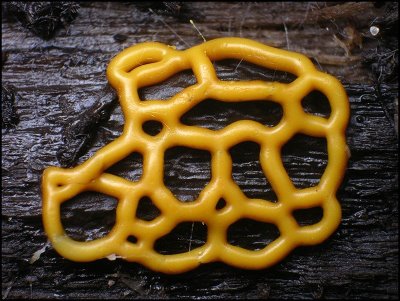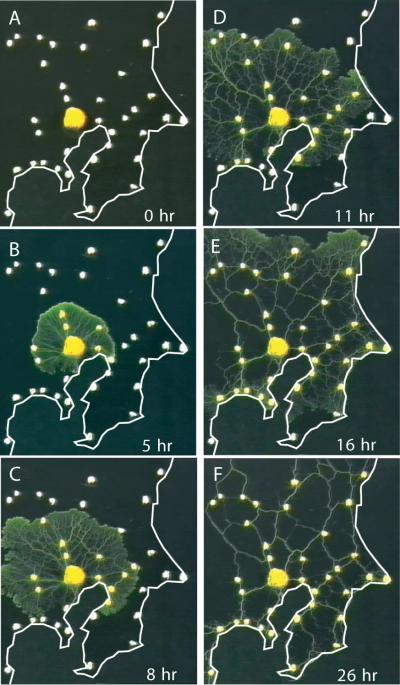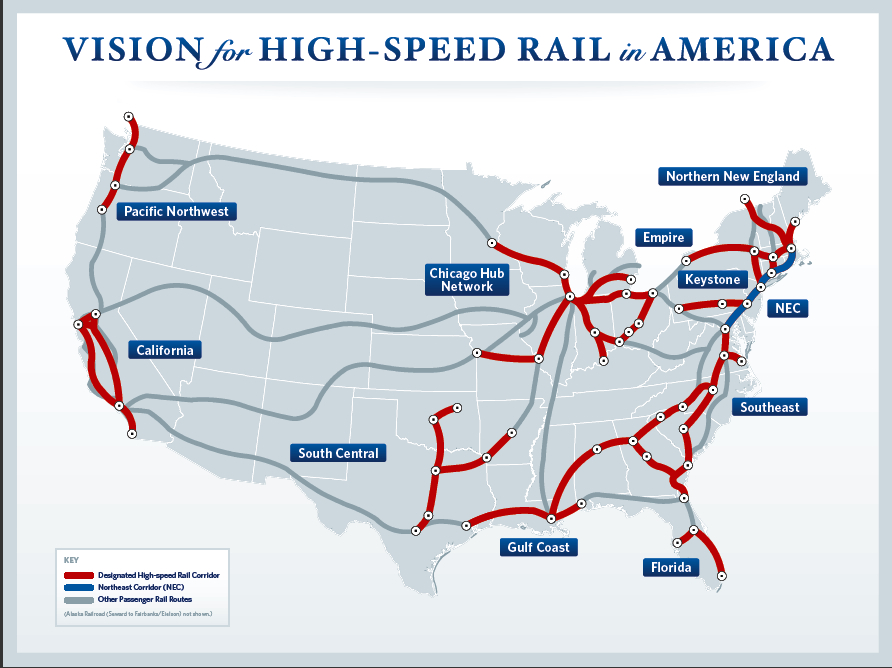
In the study of Biomimicry we're discovering nature holds many potential solutions to design issues, often in a sustainable manner. Early on goose down inspired insulation, cockleburrs stuck on his dog inspired George de Mestral to invent velcro, and now perhaps, slime mold can guide our approach to large scale transit and infrastructure projects.
Researchers have used petri dish scaled mapping systems, replacing Japanese cities with slime mold food targets and recorded their routes over a 26-hr time period. The result is highly efficient path system created by tendrils that interconnect the food supplies, closely resembling to the current transit system.
The trick has to do with how slime molds eat. When Physarum polycephalum, a slime mold often found inside decaying logs, discovers bacteria or spores, it grows over them and begins to digest them through its body. To continue growing and exploring, the slime mold transforms its Byzantine pattern of thin tendrils into a simpler, more-efficient network of tubes: Those carrying a high volume of nutrients gradually expand, while those that are little used slowly contract and eventually disappear.
A nobel prize winning experiment in 2000 at Hokkaido University in Japan, showed that P. polycephalum could find the shortest path through a maze to connect two food resources.

New research wanted to go beyond a one solution problem and involve experiment with multiple factors that would influence the path.
"The planning is very difficult because of the tradeoffs," says cell biologist Mark Fricker of the University of Oxford in the United Kingdom, who was also involved in the research. For example, connecting all cities by the shortest possible length of track often compels travelers to take highly indirect routes between any two points and can mean that a single failure isolates a large part of the network. Building in more redundancy makes the network more convenient and more resilient, but at a higher cost.
Without the obvious exclusion of geographic influence, it would be interesting to begin new transit studies with biologic diagramming. Taking political, economic, and social factors out of mega scale projects. The solutions at this stage are simply the most biologically efficient, perhaps making political rhetoric less influential on final transit design locations.
 {Mold creates paths leading to oak flakes representing the surrounding cities of Tokyo}
{Mold creates paths leading to oak flakes representing the surrounding cities of Tokyo}
In the opposite spectrum, could this non-partisan, non-emotional microbiological transit authority selection be used as precedent in eminent domain litigation. "The Physarum polycephalum has unfortunately chosen your homestead as the most efficient and direct path for the new railway, there is nothing that can be done."
 {Conceptually proposed map of US high speed rail locations}
{Conceptually proposed map of US high speed rail locations}
I would like to see this experiment done to compare similarities drawn, if any, to the current plan for the US high speed rail map. Have we selected the most righteous paths, only slime will tell (ha).
